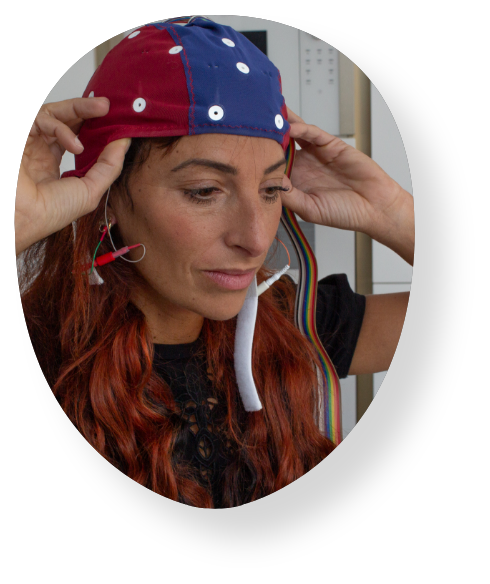QEEG LORETA Z-SCORE NEUROMETRIC BRAIN MAPPING
Originally designed for brain research, we use QEEG LoRETA Z-Score Neurometric Brain Mapping. It’s a mouthful that describes itself…
QEEG (ELECTROENCEPHALOGRAPH) LORETA Z-SCORE NEUROMETRIC BRAIN MAPPING
An EEG uses surface sensors to detect the brain’s electrical patterns (known as brainwaves).Common brain imaging techniques such as MRIs, CAT scans and x-rays are built to measure brain structure. An EEG measures brain activity and function; how you are feeling, moment to moment.
We use the EEG to see any areas where your brain is ‘stuck’ in one state or another – those underlying, habitual feelings that get in your way. That ‘background noise’ that distracts or makes you uncomfortable periodically (or constantly). These are our targets for training.
Getting an EEG is non-invasive and painless. Much like a heart monitor which only records your heart rate, the sensors only record the electrical activity of the brain. It is not invasive in any way.
QEEG LORETA Z-SCORE NEUROMETRIC BRAIN MAPPING
The QEEG brain map neurometric readings give us vital information to help identify areas of over or under-activity to train, and to precisely chart your progress.
By seeing which areas have abnormal activity, we can predict what type of symptoms you may be experiencing as a result. For example, if specific brain areas involved in attention are functioning poorly and you have difficulty paying attention, we know exactly where to train to help you regulate more efficiently.
A QEEG can identify not only brainwaves, their amplitude, location and whether these patterns are typical or anomalous, but also coherence (quality of communication between regions), phase (thinking speed), and network integration. These are all crucial patterns involved in optimal mental functioning.
QEEG LORETA (LOW RESOLUTION BRAIN ELECTROMAGNETIC TOMOGRAPHY) Z-SCORE NEUROMETRIC BRAIN MAPPING
Using a 19 sensor cap and source-correlation software, LoRETA allows us to image (and ultimately train) brainwave patterns in deep brain structures.
Being able train these deeper structures in the brain is a major leap forward in brain mapping, and enables 3D neurofeedback. The ability to train entire brain networks as a unit significantly reduces the number of sessions required to see results.
Z-SCORE NEUROMETRICS
QEEG
LORETA (LOW RESOLUTION BRAIN ELECTROMAGNETIC TOMOGRAPHY) Z-SCORE NEUROMETRIC BRAIN MAPPING
We compare these surface and deep brainwave readings to a research reference database, called a Z-score (Neuroguide, FDA research standard).
The Z-score is the measure of how near or far from a comfortable, stable, or efficient position different areas of your brain are.
And that is QEEG LoRETA Z-Score Neurometric Brain Mapping.






